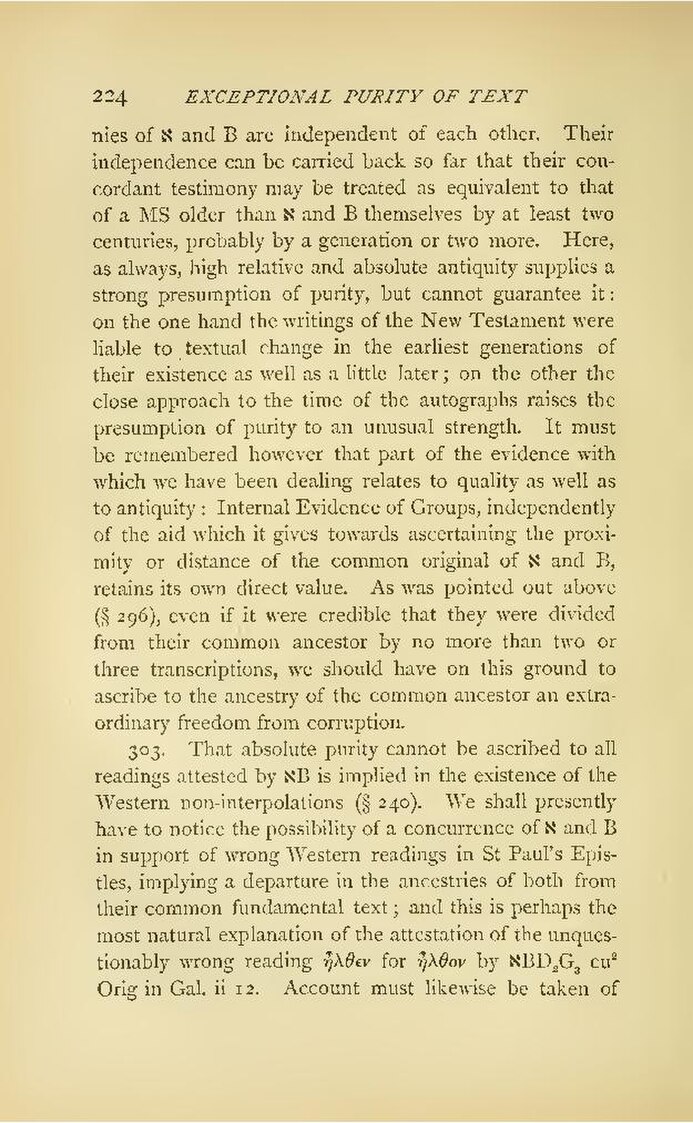nies of א and Β are independent of each other. Their independence can be carried back so far that their concordant testimony may be treated as equivalent to that of a MS older than א and Β themselves by at least two centuries, probably by a generation or two more. Here, as always, high relative and absolute antiquity supplies a strong presumption of purity, but cannot guarantee it: on the one hand the writings of the New Testament were liable to textual change in the earliest generations of their existence as well as a little later; on the other the close approach to the time of the autographs raises the presumption of purity to an unusual strength. It must be remembered however that part of the evidence with which we have been dealing relates to quality as well as to antiquity: Internal Evidence of Groups, independently of the aid which it gives towards ascertaining the proximity or distance of the common original of א and B, retains its own direct value. As was pointed out above (§ 296), even if it were credible that they were divided from their common ancestor by no more than two or three transcriptions, we should have on this ground to ascribe to the ancestry of the common ancestor an extraordinary freedom from corruption.
303. That absolute purity cannot be ascribed to all readings attested by אB is implied in the existence of the Western non-interpolations (§ 240). We shall presently have to notice the possibility of a concurrence of א and Β in support of wrong Western readings in St Paul's Epistles, implying a departure in the ancestries of both from their common fundamental text; and this is perhaps the most natural explanation of the attestation of the unquestionably wrong reading ἦλθεν for ἦλθον by אBD2G3 cu2 Orig in Gal. ii 12. Account must likewise be taken of
